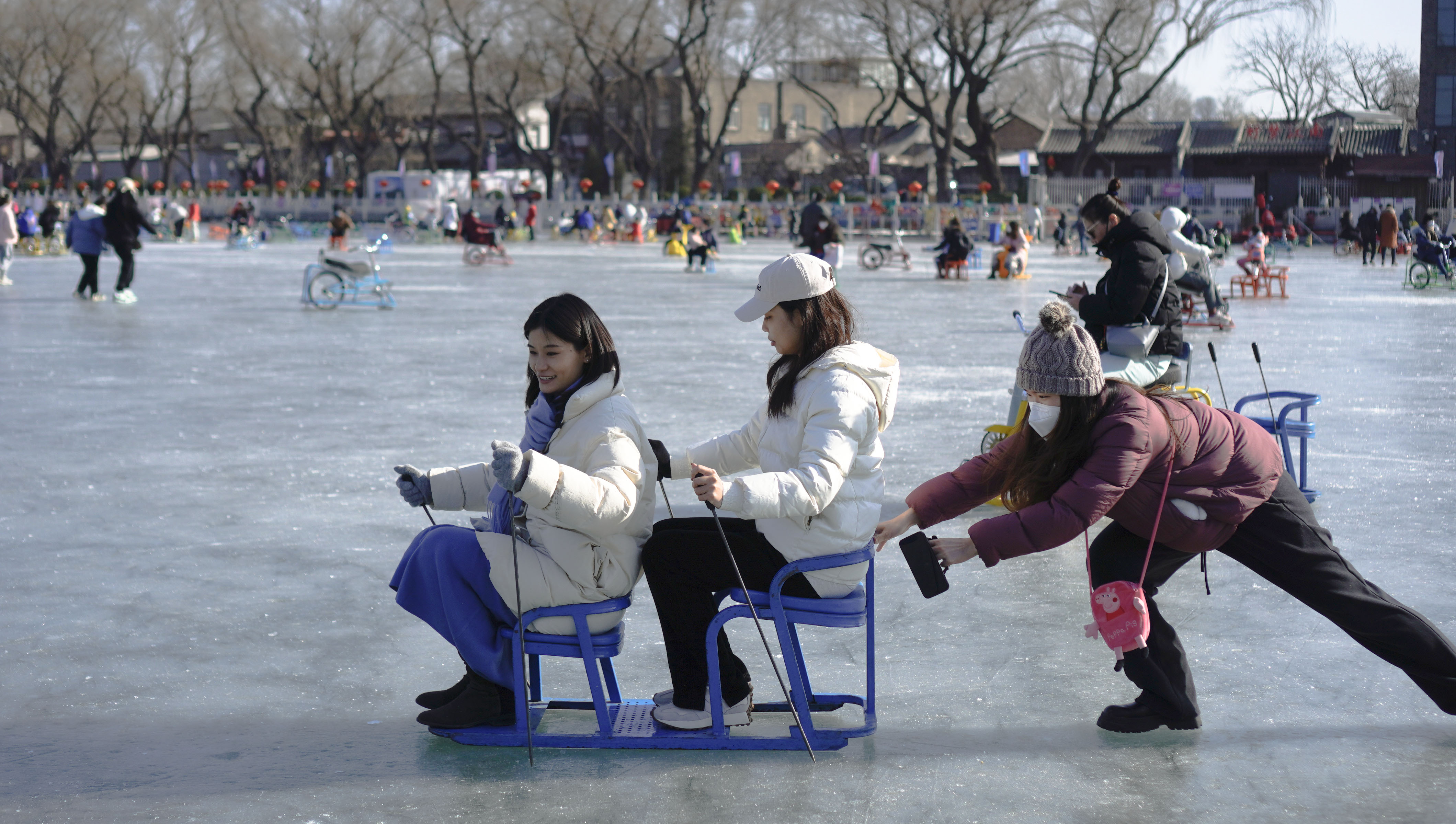01:45

Beijing bustles again after the optimization of COVID-19 measures. As the weather becomes colder, outdoor skating offers people a great chance to enjoy being outside and embrace nature.
Shichahai is a natural ice rink with a long history in Beijing, carrying memories of many people's childhood – especially those born in the 1940s and 1950s.
Early in the morning, many ice sports enthusiasts still come here to skate. Children put on colorful ice skates and chase each other on the ice surface. The ice rink management also provides sleds and ice bikes for visitors.
But how does one skate on ice? As skates glide on the ice, the pressure causes the surface temperature to rise, partially melting the ice and creating a mixture of water and crushed ice, which becomes a natural lubricant on which one can skate.
Also, why does ice first form on a lake's surface, rather than at the bottom? Warm water becomes denser as it cools, causing it to sink. This may lead one to believe that ice should first form at the bottom of a lake rather than on the surface. But actually, when water is cooler than 4 degrees Celsius, it begins to expand and becomes less dense. Eventually, the coldest water, which has floated to the top of the lake, freezes to form a layer of ice.
There is a lot of science behind these seemingly simple questions. Let's enjoy winter and go skating together!
(Produced by Xing Fangyu, Yu Rong, Gao Yuxin, Liang Si and Tian Rongzhen)
(If you want to contribute and have specific expertise, please contact us at nature@cgtn.com.)